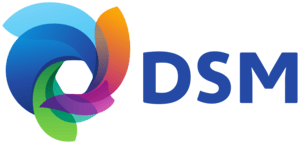You want people to feel safe. You want them to dare express themselves. To recognise exclusion. To participate. So, you use certain tools – a training, a conversation chart, an internal memo.
But then, nothing happens, or worse: inclusion fatigue and/or resistance.
The second cornerstone of the buy-in model is about that moment. Not about whether you do something, but whether you use the right tools, at the right moment and for the right groups. In other words: the how question.
How do you correctly apply D&I tools and communication?
The right moment
Not every organisation is in the same place within the conversation about D&I. And yet, there are often pre-made modules, without tailoring it to the workplace itself. What works in one context might mostly raise questions or cause frustration in another.
That is why step one is understanding where your organisation stands. Do employees know the language surrounding exclusion? Is there any experience with interventions? Or is it still all a bit of a sensitive theme?
When you know that, you can take a much more targeted approach.
The right format
A D&I tool or intervention will only work when it is recognisable, usable and meaningful for the people that are going to work with them. If well-willing people get tools that don’t match what they need in practice, you run the risk of them feeling their efforts won’t make a difference anyway. In turn, that leads to demotivation, passivity and eventually quitting. Even for the most dedicated colleagues.
To avoid this, D&I tools and their use should meet three conditions:
- Concrete: the tool should relate to recognisable situations and everyday dilemmas. No abstract models, but clear questions, phrases or examples that help people navigate real workplace situations.
- Repeatable: one-off applications will not stick. A tool has to be anchored in work routines. A conversation chart in a cupboard is not a tool. A reflection framework that sees weekly use in team meetings, that’s application.
- Co-determination: people should be able to recognise themselves in the tools they use. Not because it’s mandatory, but because it’s theirs. Actively involve teams when choosing, adapting or developing your tools. Only then do you create real engagement and ownership.
On one of the universities we work with, we created a checklist with participants: how do you create a project in an inclusive way? A year later, we trained those very same participants to give basic D&I workshops to student organisations. In the workshops they gave, they used the checklist they themselves created a year prior. That’s how you apply what you’ve made yourself.
The right group
Not everyone in an organisation is at the same point. That is precisely why a targeted approach is essential. Some colleagues are pioneers: motivated, curious and ready to dive in. Others are still searching or sceptical. They need something different and sometimes just need space to get used to the theme.
Roles matter, too. Managers have different responsibilities than employees. They don’t merely need to understand D&I, they need to support and promote it. This requires specific tools: to guide discussions, encourage desired behaviour and set a good example.
An effective tool or intervention therefore takes differences into account: in motivation, experience and role.
Next week: measuring and adjusting
Application requires precision. What fits now, for who, and how? That’s where the difference between policy and practice lies. Between using something, and making it work.
Next week we’ll look at the third cornerstone of the buy-in model: measuring and adjusting. Because when you use something, you want to know what results it will yield and where you might have to adjust.
Update: the buy-in scan is now available!
The buy-in scan: where does your organisation stand?
Now the question: how does your organisation score in these three areas? The buy-in scan helps you discover that in 26 short questions and is specifically developed for D&I officers.
What you get:
- A directional report with your current D&I buy-in score.
- Identification of risks and opportunities
- Shared language to be able to work concretely on D&I
- Opportunity for a free consultation with suggestions for your score and personal situation







